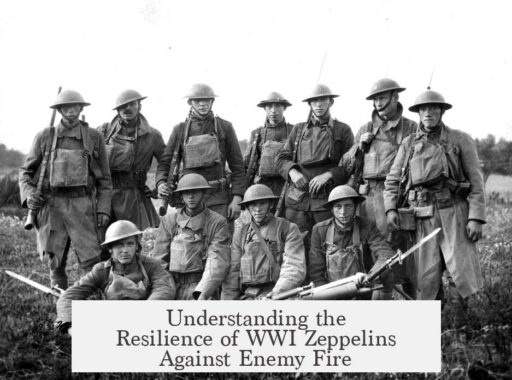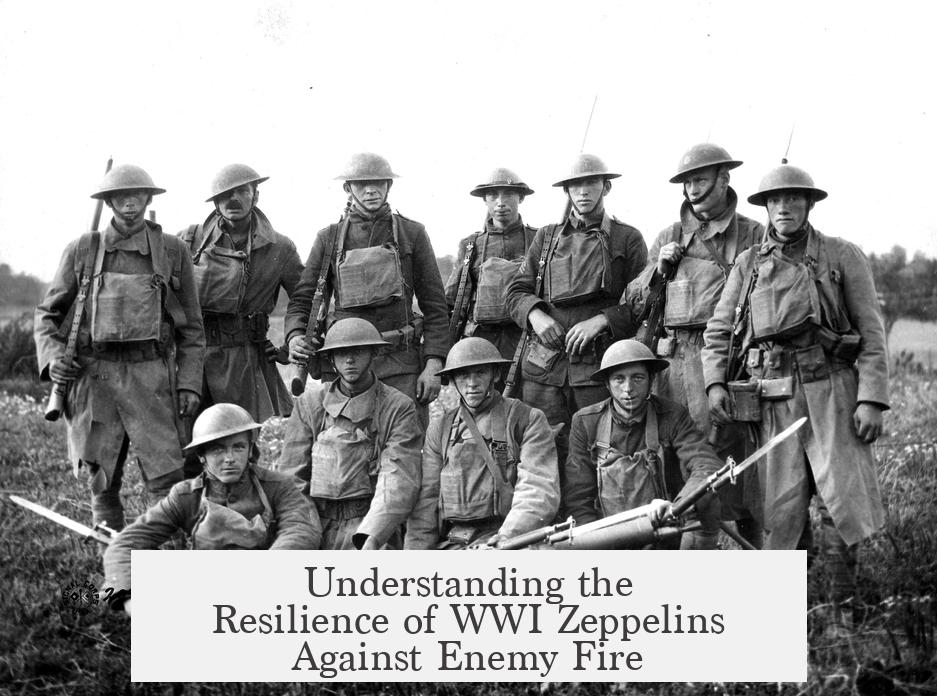Zeppelins in World War I proved difficult to shoot down due to their high operational altitude, structural design, and the limited technology available for detection and defense early in the war. Their ability to fly nearly two miles high and travel long distances gave them a significant advantage. British defenses initially lacked effective anti-aircraft weapons and fighter planes capable of reaching these altitudes, extending the challenge of intercepting these airships.
Zeppelins could ascend to about 10,000 feet, far above the reach of most early WWI fighter aircraft. Their large size and metal framework housed several gas bags filled with hydrogen, which leaked slowly when punctured rather than bursting immediately. This structural characteristic meant that typical machine gun fire was insufficient to bring them down quickly. Shooting at a Zeppelin often caused only minor leaks, failing to compromise the airship’s buoyancy in the short term.
At the start of WWI, Britain had no radar systems. Zeppelins flew mostly at night and under cloud cover, which, combined with their low noise signature, made visual and acoustic detection difficult. Early fighter planes had limited speed and climb rate, leaving them unable to reach the altitude or intercept the Zeppelin before it completed bombing runs and disappeared into the clouds. Airplane-mounted searchlights emerged as a countermeasure, but these were still in their infancy and not very effective initially.
| Key Challenges Shooting Down Zeppelins | Details |
|---|---|
| High altitude capability | Flying at about 10,000 feet placed Zeppelins above most fighters’ reach. |
| Structural resilience | Multiple gas bags in rigid metal frames slowed down hydrogen loss after punctures. |
| Detection limitations | No radar, attacks under cloud cover and night hampered visual spotting. |
| Underdeveloped anti-aircraft defenses | Early war AA guns had insufficient range; rapid fighter deployment was difficult. |
Improvements appeared only after the British developed incendiary ammunition in 1916. Incendiaries proved crucial by igniting hydrogen gas, which was highly flammable. Nevertheless, shooting down a Zeppelin remained tough due to its size and the skill required. For example, a pilot had to expend hundreds of rounds of mixed ammunition to ignite and destroy one Zeppelin. Attacks often involved close encounters under intense anti-aircraft and defensive gunfire from the Zeppelin itself, with pilots risking significant damage to their aircraft.
“I had to put three drums worth of ammunition into it — each drum had 97 rounds … It seemed to have no effect until hitting a critical spot underneath the rear, where it suddenly ignited and the Zeppelin caught fire.”
Overall, Zeppelins combined physical resilience, altitude advantage, and the element of surprise. These factors, coupled with limited early-war technology, made them challenging targets. Only after significant technological advancements in anti-aircraft artillery, searchlights, and incendiary bullets did it become more feasible to shoot them down, yet even then, the process remained demanding and hazardous.
- Zeppelins flew high and far, making early interception difficult.
- Rigid frames and multiple gas bags delayed critical damage from gunfire.
- Limited detection tools and night attacks reduced early warning capability.
- Initial anti-aircraft weapons and fighters lacked height and firepower.
- Incendiary ammunition significantly improved interception success later.
- Destroying Zeppelins required large amounts of ammunition and close engagement under fire.
I Never Understood Zeppelins in WWI. Why Were They Not Really Easy to Shoot Down?
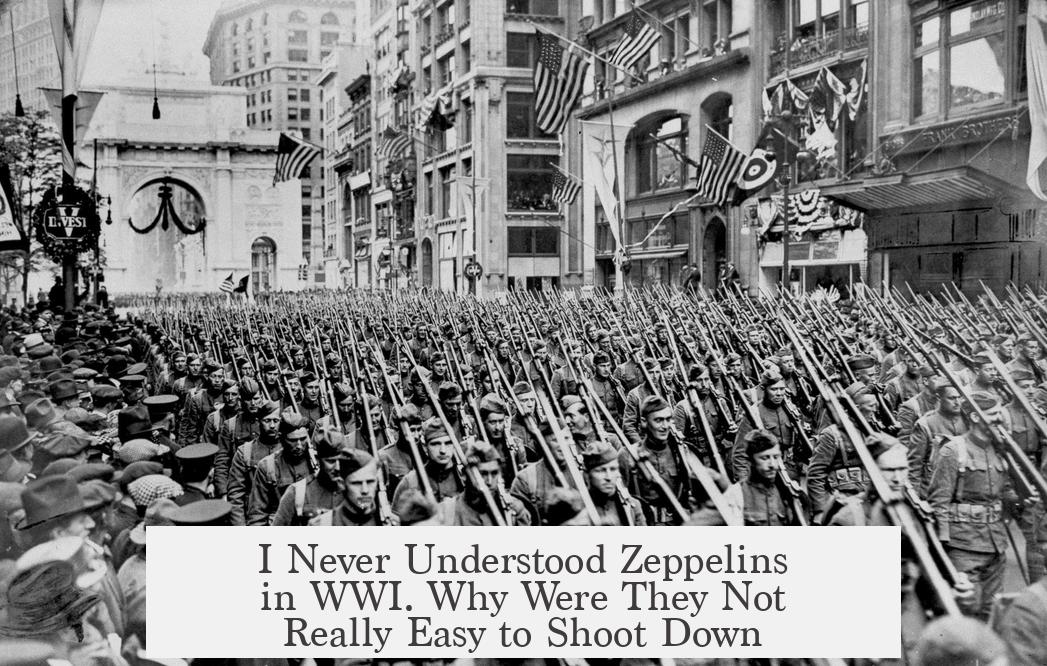
Zeppelins in WWI were incredibly tough targets. Despite being large, slow, and floating targets, shooting them down was no simple task. Their altitude, stealth, construction, and early defense gaps kept them safe longer than most expected.
Sound surprising? Let’s unpack this historical puzzle and explore why these massive airships managed to evade destruction in the early days of aerial warfare. Spoiler: It’s not because the pilots weren’t trying!
The Early Edge: Height, Silence, and Bomb Load
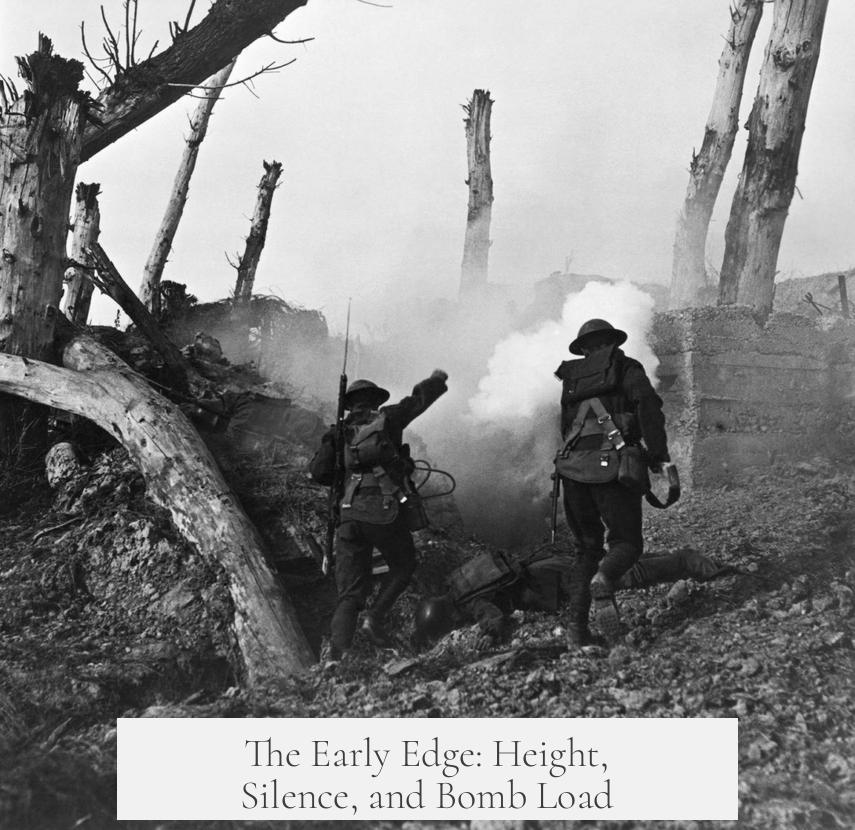
Hook yourself in—these floating giants could climb high. Around 10,000 feet, nearly two miles above the ground, Zeppelins had a commanding position. Infantry and early anti-aircraft gunners struggled to reach them, and fighter planes found chasing them uphill exhausting. Almost like a stealth bomber of the early 20th century.
Radar? Nope, didn’t exist then. Zeppelins made barely any noise. The British early warning sniffers, like acoustic detectors that tried eavesdropping on aircraft engines, were useless here. Zeppelins usually struck under the cover of darkness—often on cloudy nights, blending perfectly into the black canvas of the sky.
Add to that their bomb load. Over two tons per Zeppelin. Striking in groups made their raids terrifyingly effective, especially given Britain’s lack of proper anti-aircraft weaponry at the war’s outset.
Zepplin Design: Why They Didn’t Go Popping Like Balloons

People picture gasbags popping at the slightest prick. In reality, Zeppelins were rigid airships with metal frameworks holding multiple gas cells inside. Puncturing a few gas bags was more like poking holes in a water balloon, causing slow leaks rather than instant catastrophe. It took serious damage for a Zeppelin to come down.
Early fighters tried spraying machine gun fire, but their bullets sometimes just tickled the gasbags, which slowly leaked, only forcing Zeppelins down after hours—or sometimes not at all. In addition, early fighters had poor climbing abilities. Catching a Zeppelin at 10,000 feet pushed their limits, making bombing or strafing runs tough to pull off.
Anti-aircraft artillery was virtually non-existent or ineffective early on. The British had not expected enemy aircraft bombers and did not deploy high-altitude capable AA guns initially. Those QF 3-inch 20 cwt guns appeared later, but it took time before they covered the skies effectively.
When the War Tech Caught Up: Fighting Back Got Better
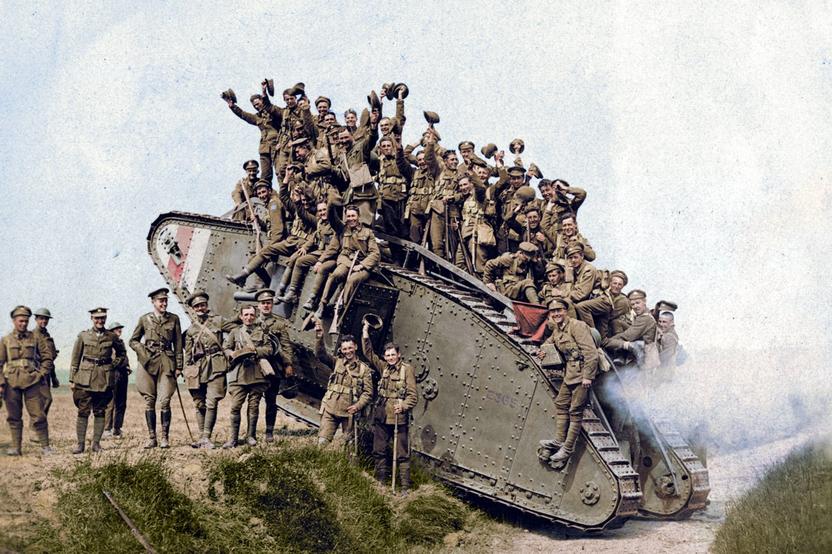
Over time, definitions of “easy to shoot down” shifted. Anti-aircraft guns improved first, along with searchlights and observer posts around likely Zeppelin flight paths. Tracking them became feasible, especially as zep attacks shifted to slightly less cloudy nights or dawn periods.
The real game-changer was the British development of incendiary ammunition around 1916. Instead of the usual bullets, these rounds set the hydrogen-filled gasbags ablaze. That’s what made shooting a Zeppelin a fiery explosion rather than a slow puncture party.
Even With Improvements, the Fight Was No Cakewalk
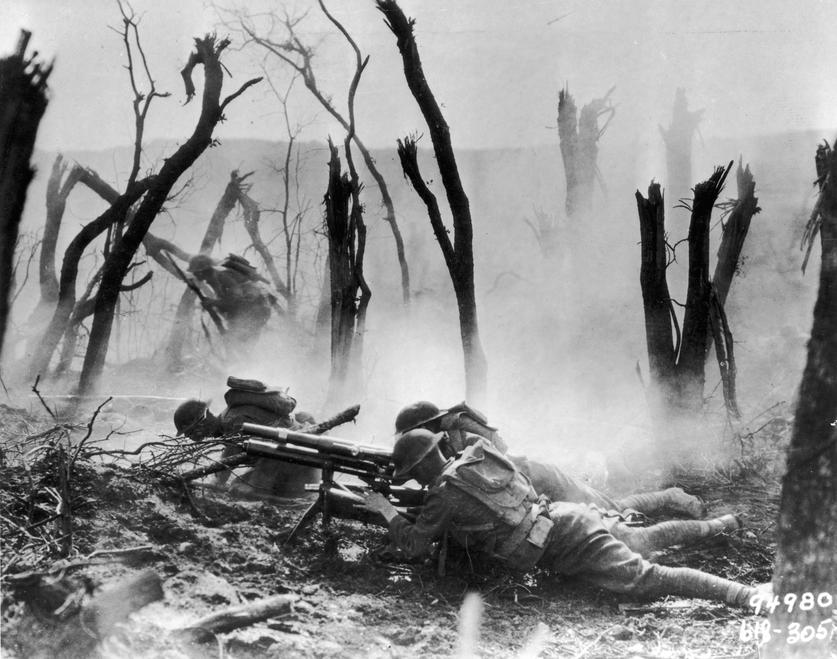
A WWI pilot described taking down a Zeppelin with incendiary rounds. He fired three whole drums of bullets, with each drum holding 97 rounds. The attack wasn’t just a few bursting hits but a prolonged, precise, and nerve-wracking effort under hostile defensive fire.
“I sacrificed height for speed to attack. I fired one drum along its side, then another—all initially without effect. Only after concentrating one drum on the rear part did I see it glow and burst into flames. I had to quickly get away from the blazing wreckage.”
That pilot even returned with damage from the Zeppelin’s defensive gunners, who shot holes in his plane’s structure. So these airships, awkward as they were, could defend themselves in the skies.
Why Didn’t Early Fighters Have Better Ammo or Tactics?
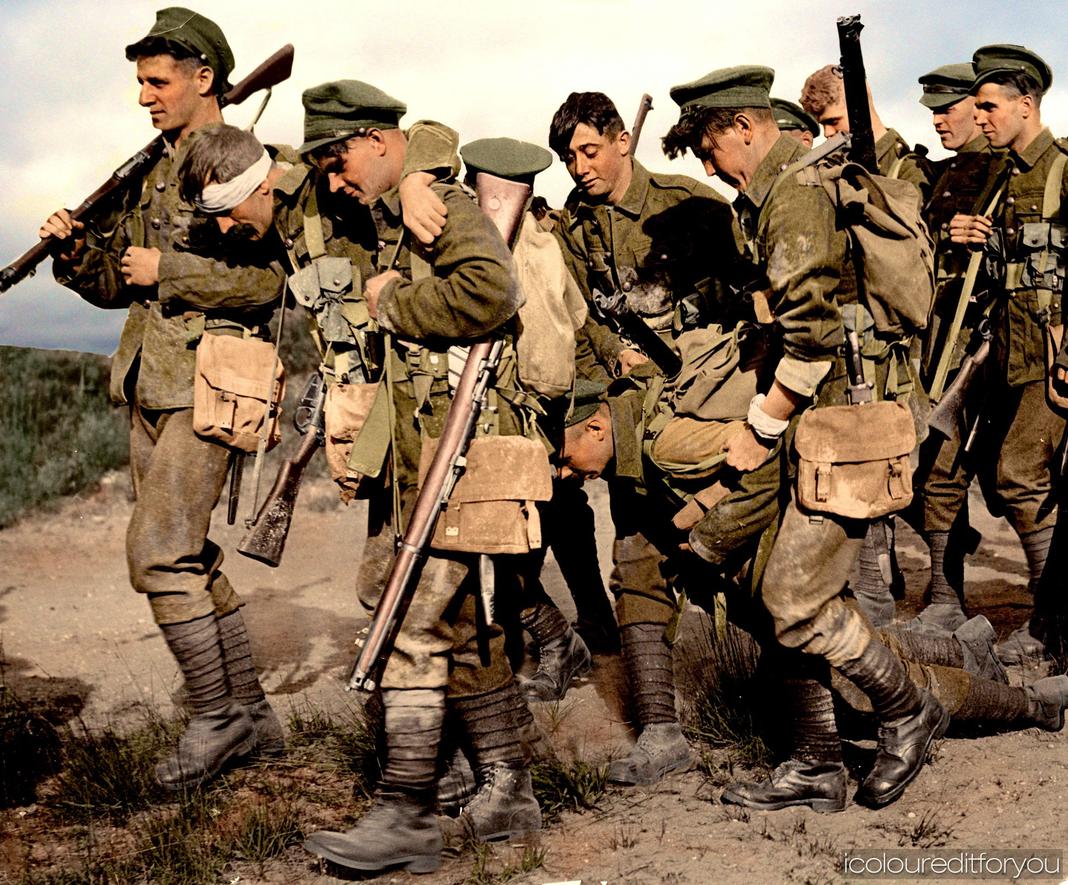
WWI was the dawn of air combat. Doctrine and technology barely scratched the surface. Fighter planes and ammunition developed as reactionary fixes. When incendiary bullets came along, they changed the game—until then, just piercing the Zeppelin’s skin was mostly symbolic.
Moreover, early fighters struggled to climb high and stay stable enough to aim well. No bombs dropping from above, no precision strikes. Just machine-gun volleys from challenging angles against a giant blimp designed to absorb a lot of punishment.
If you think Zeppelins were archaic easy targets, think again. They were the stealth bombers of their day—slow, sure, but operating under a cloak of night and altitude superiority that early air defences couldn’t pierce.
The Big Picture: Why Zeppelins Weren’t Easy Pickings
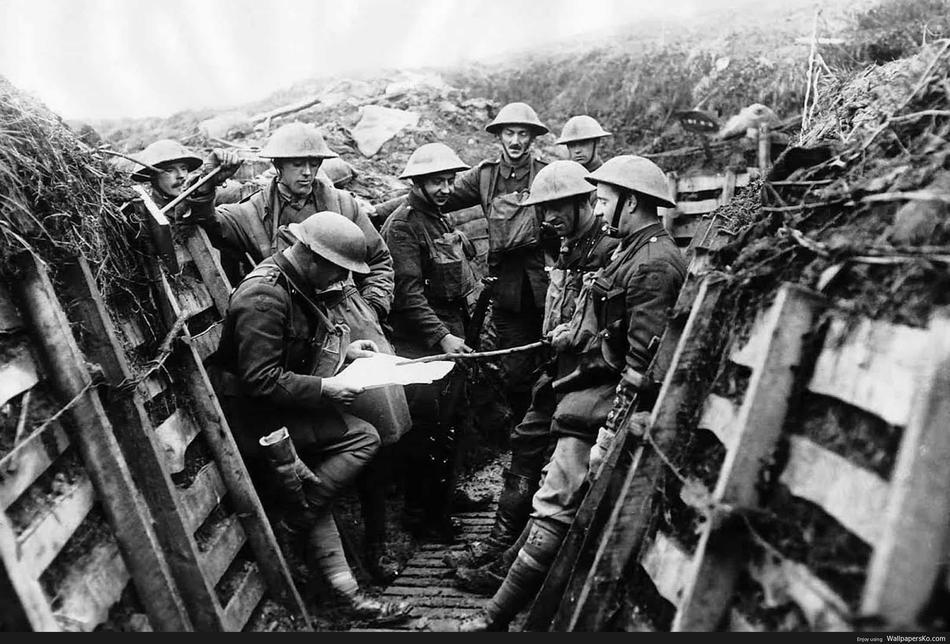
- Height Advantage: Operating near 10,000 feet kept them above many early fighters and artillery ranges.
- Stealth at Night: Silent engines and dark skies made visual detection tough.
- Structural Resilience: Multiple gasbags inside rigid frames meant slow leaks, not quick pops.
- Weak Early Defences: Lack of high-altitude AA guns and specialized ammo delayed effective counterattacks.
- Defensive Gunners: Zeppelins carried machine guns that actively defended against attackers.
- Technological Lag: Aircraft and ammo evolved during the war, so initial attacks were largely ineffective.
Would Zeppelins Survive Today’s Skies?
Well, modern radar, missiles, and jets make these slow, fragile giants sitting ducks. But back then, WWI’s air war was a new frontier. Zeppelins leveraged what they had over their enemies: height, darkness, and concealment. That’s why they were tough targets to bring down.
Next time you hear someone joke about huge flying blimps just floating harmlessly in the sky, remind them: it took guts, great ammo, and a hefty dose of persistence to put zeppelins down in WWI.
